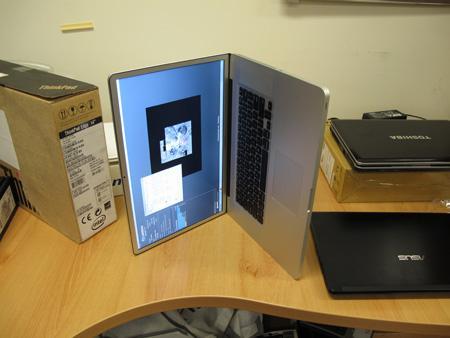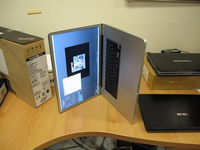This post is automatically translated with LLM. The translation content has NOT been reviewed and may contain errors.
Apple laptops' overheating sensors don't seem very sensitive. Even when I could feel the exhaust vent scalding hot, the fan stubbornly kept spinning at a leisurely 2000 rpm. The temperature at that moment was 90 degrees.
For CPU temperatures measured in laptops:
- 70°C indicates a minor issue,
- 80°C warrants attention,
- 90°C... immediately check your machine for problems.
Excessively high CPU temperatures shorten your CPU's lifespan, ruin your computing experience, and might even burn your legs if placed on your lap. If you jump up in surprise, your $1,500 Macbook could crash to the floor.
During an extreme "devil-level test" conducted overseas, testers installed specialized software to push a Macbook to full load, easily hitting 100°C. Afterward, they had to leave the Macbook cooling overnight to return to room temperature. During testing, this poor Macbook Pro had to stand in this position:

Therefore, CPU temperature issues demand serious attention.
1) Monitoring CPU Temperature
- Windows: Countless tools exist. If you don't mind 360, try 360 Hardware Master (Lu Da Shi); alternatively, use Driver Genius; for advanced options, Everest works.
- Linux: Use
lm_sensors:
(I forget if the last command needssudo apt-get install lm-sensors lm_sensorssudo—I think not.) - Mac: smcFanControl handles everything.
2) Controlling CPU Temperature
-
Adjust Fan Speed
- Mac: smcFanControl handles it.
- Windows: Search for "LubbosFanControl".
- Linux: Unknown.
-
Choose the Right OS
macOS is optimized for Apple hardware; Windows isn't. Tests show Macbook CPU temperatures run 5°C higher in Windows than Linux when idle (only desktop + temperature tool running).
However, Windows may be better for Flash content—macOS has poor Flash support, causing high CPU usage and extra heat. -
Reduce Background Processes
Background apps like Dropbox or idle Xunlei consume CPU resources, generating heat. Close them when unused; launch only when needed. -
Lower Ambient Temperature
Server rooms blast AC to 20°C in summer because powerhouse CPUs like Xeon E3/E5/E7 generate extreme heat. Poor cooling leads to reduced lifespan, crashes, or worse... egg-frying scenarios.
At home, using your Macbook in an AC-cooled room typically lowers temperatures by 5–10°C vs. non-AC environments.
(Winter heating doesn』t count here.)
Summary: Go where it』s cooler. -
Use Lightweight Software + Ad Blocking
Replace memory-hungry Chrome with Safari or Opera.
Disable unused Chrome extensions to reduce background processes.
Install Adblock Plus and FlashControl to block ads/Flash, lowering CPU load.
Follow these tips, and you won』t need to worry about your computer frying eggs.
